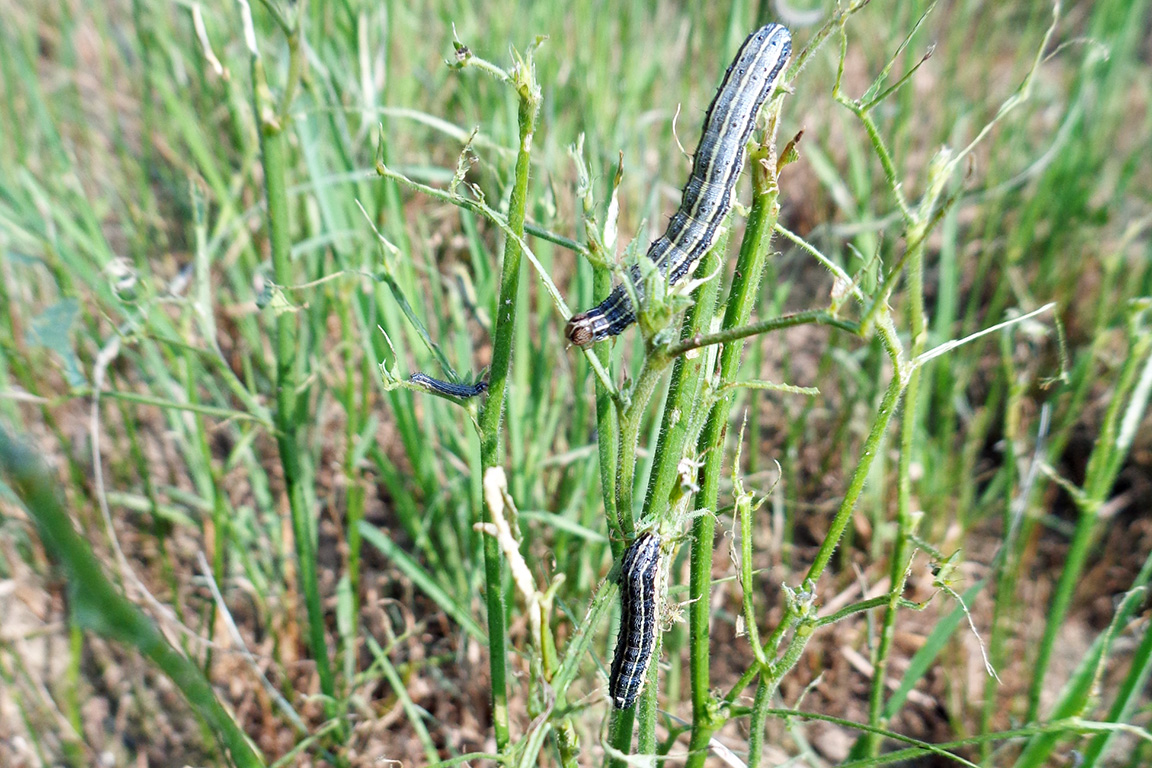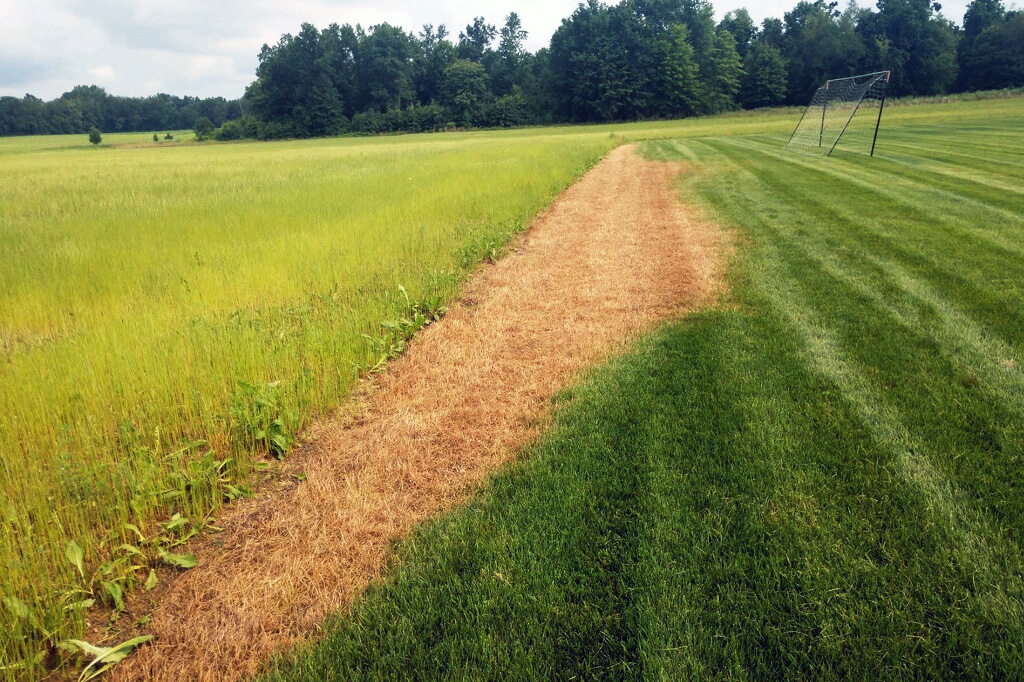Reports of denuded forage crops, especially alfalfa, from large numbers of fall armyworm have been shared from throughout Kentucky and southern counties of Indiana and Illinois. This is not a total surprise – see Pest&Crop article from August 6, 2021 HERE concerning the large moth captures and early damage reports in Kentucky.
Female moths arriving from southern states will seek late-developing crops (i.e., young, tender foliage) in which to lay their eggs. Identifying the larva is the first step, but is pretty easy for this species. The head of the fall armyworm is dark colored with a predominant white/yellow, inverted Y-shaped suture on the front. This “Y” distinguishes the fall armyworm from other armyworm species. Although typically not a big concern in Indiana, this is one tough pest, and one of the key worldwide pests of a wide range of crops.
Most corn in southern counties has matured beyond any concern, but “trap” crops, e.g., replanted corn in drowned out areas or late-market sweet corn may be attractive. Unlike true armyworm (a corn/grass specialist), fall armyworm will feed on a wide range of broadleaves as well. It would be a stretch to say “they eat anything”, but not far off. By far, most damage reports are from hay/alfalfa mix fields. Initially, small larvae feed on the leaf surface, causing a “windowpane” effect, where the green tissue is removed and a transparent membrane remains. Fall armyworm will infest multiple species of grasses and broadleaf forages. Their insatiable appetite can denude alfalfa/hay crops rapidly, especially newly established stands. Like true armyworm, they “march” en masse to the next field. So if you see a field being destroyed, the crop next door is the one to watch.
Pest managers, especially in southern Indiana counties, should monitor crops that are still green for fall armyworm presence and their damage. Homeowners with their yards adjacent to damaged pastures, are seeing their lawns turn brown to the line as the “army” moves!
When considering controls, carefully read pesticide label restrictions by crop and rate. By the time fall armyworm are large and on the move, they will eat the most foliage but they will also soon be pupating. In other words, most damage being found is beyond treating! SCOUT NOW!!! Large fall armyworm larvae are very difficult to kill. Most insecticides will only “suppress” later-instar larvae, i.e., the ones that are “marching.” Use the highest labeled rate of insecticides labeled for that specific crop. Mixed plantings of hay crops exclude many popular insecticides…read the label!
One more thing: schedule insecticide applications late in the day if possible. This serves two purposes: it reduces the likelihood of sunlight/UV breakdown of insecticides, and maximizes the probability of larvae encountering fresh, lethal residues – fall armyworm, like many caterpillars, are more active at night to avoid predation by birds and other natural enemies.




